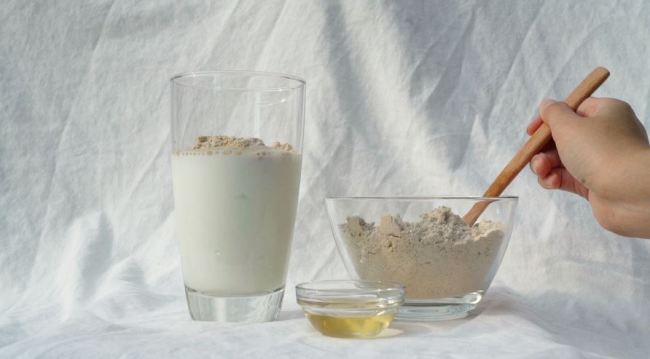[Video] 5 Korean traditional drinks to beat the heat
By Korea HeraldPublished : Aug. 21, 2018 - 09:59
As the heat wave continues across the country, here are a few traditional drinks that Koreans typically turn to in summer.

1. Misutgaru
At first glance, misutgaru, a Korean multigrain powder, just seems like a bland substance with a lifeless beige color. But contrary to its appearance, the mixture of roasted and ground grains is well-known for its nutritional benefits and addictive, nutty taste.
Koreans often make misutgaru shakes at home by adding water or milk, ice and honey. In cafes, misutgaru lattes and frappes are becoming quite popular. Healthy and refreshing, the simple drink is perfect for all ages, especially when soaring temperatures deplete people’s energy levels.
Koreans believe the grain powder prevents clogged arteries; promotes digestion; aids weight loss; and helps attain dewy skin.
2. Sikhye
Sikhye, or rice punch, is one of the sweeter traditional drinks enjoyed in summer, though it was enjoyed in winter in the past. Back then, sikhye was prepared only for special occasions through a process of boiling barley, malt water and rice. It is now available 24/7 in cans at convenience stores.
There are different types of sikhye by region, but they are all generally characterized by their easy-to-digest nature. As the drink was said to prevent indigestion and promote blood circulation, sikhye was historically consumed during holidays when feasts were common.
Today, chilled sikhye is often served after dinner at traditional Korean restaurants and is often garnished with rice grains that were part of the boiling process.
3. Sujeonggwa
Another sweet dessert drink, sujeonggwa or Korean persimmon punch, is made with hints of cinnamon and ginger. According to several historical books, the popular beverage was served to kings, but the old recipe only seems to have incorporated boiled dried persimmon and pine nuts.
People drink sujeonggwa because it is believed to be beneficial for the liver, digestive health and blood circulation. While its health benefits are similar to that of sikhye, sujeonggwa has a far more fiery kick because of the spices used.
This tea, which is usually served with a few floating pine nuts, can also be bought in cans from most grocery markets in Korea
4. Omijacha
Translating to five-taste tea, the reddish omijacha is also recognized as Schizandra tea. It is known to be perfect for summer as it quenches thirst and relieves tiredness because of its jolting bitter, sweet, salty, pungent as well as sour characteristics.
Omija, the berry used for the tea, is thought to lower blood pressure and be helpful for detoxification. The berries can either be mixed with hot water in powder form to create a winter drink or be soaked in cold water and sweetened for an iced version.
5. Maesilcha
Maesilcha or Korean plum tea, is effective in beating tiredness, remedying upset stomachs and boosting the immune system. In addition, its tangy, refreshing taste is delightful in the summer months, which is when green plums are in season.
Unlike most fruits, the plums must be picked when they are firm and tart because they are usually made into sweetened extracts. Though it can be purchased in stores, many Korean households make their own green plum extract because it can be used in many ways, including as seasoning in dishes.
While maesil is popular in Korea, it is prevalent in other Asian countries, too.
By Serena Soh, Intern reporter (sjsoh@heraldcorp.com)
-
Articles by Korea Herald








![[Graphic News] More Koreans say they plan long-distance trips this year](http://res.heraldm.com/phpwas/restmb_idxmake.php?idx=644&simg=/content/image/2024/04/17/20240417050828_0.gif&u=)
![[KH Explains] Hyundai's full hybrid edge to pay off amid slow transition to pure EVs](http://res.heraldm.com/phpwas/restmb_idxmake.php?idx=644&simg=/content/image/2024/04/18/20240418050645_0.jpg&u=20240419100350)






![[From the Scene] Monks, Buddhists hail return of remains of Buddhas](http://res.heraldm.com/phpwas/restmb_idxmake.php?idx=652&simg=/content/image/2024/04/19/20240419050617_0.jpg&u=20240419175937)

![[KH Explains] Hyundai's full hybrid edge to pay off amid slow transition to pure EVs](http://res.heraldm.com/phpwas/restmb_idxmake.php?idx=652&simg=/content/image/2024/04/18/20240418050645_0.jpg&u=20240419100350)

![[Today’s K-pop] Illit drops debut single remix](http://res.heraldm.com/phpwas/restmb_idxmake.php?idx=642&simg=/content/image/2024/04/19/20240419050612_0.jpg&u=)